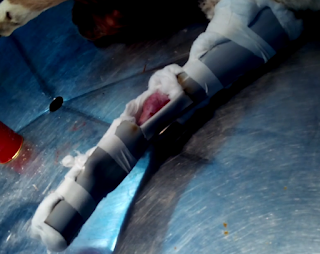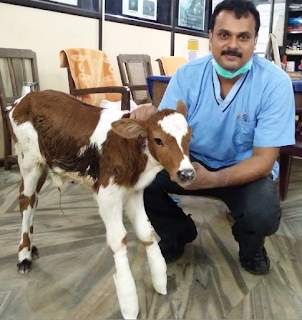Mindfulness is Buddhist
philosophy of living with greater awareness in the present moment. I got
introduced to this wonderful life transforming concept during my Army tenure. I
was working as a Major in Indian Army and was posted at High Altitude Animal Transport company ,
Eastern Command sector . About 200 metres from our camp, there was a Buddhist Monastery at a place called T- Gompha
. During my first visit to that monastery, a unique feeling of calmness and
serenity embraced me as I could see happy and relaxed faces of monks with an
aura of blissfulness. I met a monk named Dorje during a morning walk who transformed
my concepts and approach towards life. Dorje was a microbiologist from
Sweden who left everything and became a
monk in his search for peace . I was surprised by the fact that many monks in
the monastery were professionals ranging from doctors, engineers, business men
and even scientists who left everything for spiritual pursuits. Though my
question regarding the factor which made
them leave all their material possessions remained partially understood at
that time , I was convinced by the fact that monks around me were in deep
satisfaction , smiling heart fully and none of them was cribbing of their past,
neither worried about their future. Everyone seems to be in harmony with their
own self and with nature.
In the monastery, I found all the monks
busy with daily chores with utmost devotion and attention. Dorje explained that
the monks were performing every action mindfully and that is the open eye
meditation one can do. He explained that the only connection between the mind
and body is breath and wilful attention to the breath will control the mind and
prepare it to reach higher level of understanding. Mindfulness is the
nonjudgement awareness of the present moment or in other words, a state of
active, open attention to the present. Mind thinks between 60,000 – 80,000
thoughts a day. That's an average of 2500 – 3,300 thoughts per hour. Dorje said
to me that “Even though we are thinking, we don’t know that we are thinking”
and this takes us far away from the reality of the present moment living with
preoccupied thoughts in mind of past or future .
The
key concept in practice of mindfulness is observing one’s thoughts and feelings
without judging them as good or bad. In short maintaining a moment-by-moment
awareness of our thoughts, feelings, bodily sensations, and surrounding
environment, through a gentle, nurturing approach. The day were are born we
started breathing and will continue breathing till our last moment. An average
person at rest takes about 16 breaths per minute. This means we breathe about
960 breaths an hour, 23,040 breaths a day. We are living with 23040 breaths and 80,000
thoughts per day not being aware of the present moments. In other words, we are
living in an” auto pilot mode “being
unaware of our thoughts, always dwelling in past and future and unconsciously
drifting through the most important present moments of our life.
Simple step meditation process on mindful
practice is based on four attributes: attending, listening, empathy and
self-compassion. The attentive mind is a
courageous one that is not afraid to challenge what we thought we knew, and
replace it with what we now see with new clarity.
Being a Veterinarian, we have sufficient
opportunity to perceive the present moment by observing our patients and nature
around us. Animal behaviour psychology is
the subject grounded in the concept of applied mindfulness . The way a dog
responds after coming to your hospital, how a cat sleeps by responding to even
a slightest disturbance, the way the dog smells at the outset of seeing a new
person or an animal, the way the dogs
respond to different sounds, the
position of eyes, ears and tail in animals in each situation , how a crow approaches
its food, the way a tiger or a lion prepare
for a hunt, the way a deer escapes by flight and how a crane stands on single
leg, motion less and catching a fish in fraction of seconds are some wonderful examples
of mindful animal life . Buddhist monks
practice mindfulness in very unique way of open eye meditation watching a
flower blooming, watching ants pooling their food and even watching the cloud
patterns moving in the sky.
“Be still- Stillness reveals the secrets of eternity” ― Laotzu
The present way of progress in mankind,
made us more and more dependent on gadgets which took away our natural
observation skills leaving us with more onscreen time in hours than off-screen minutes which badly affects our perception.
Simple practice of mindfulness like observing an animal thoroughly just by
perceiving its responses without judging and careful assessment of its response
with intention is an example of mindful way of diagnosis.
A daily sitting practice is the
cornerstone of this intentional lifestyle. A beginner can spend 5 -10 minutes a
day just watching the breath and focusing a routine activity. The deep sense of
satisfaction that one attain progresses as the days advance in practice. This
practice of intentional attention and observation allows us to be more
self-tolerant to a wide range of our own emotions, including boredom, anger,
frustration, happiness and contentment, without escaping from them.
Mindful veterinary practice involves each
of us living moment to moment, trying to be an attentive listener who practices
empathy for others, and holding oneself gently and with self-compassion. Simple
practices of mindfulness had brought rewarding results in my personal life and my
professional life as a surgeon.
From the past few years I am in to this wonderful area of discovery and the kind of peace that one experience by just focusing inwards and exploring the boundless territory of self awareness is beyond words to express. Mindfulness Based Stress Reduction (MBSR) was originally conceptualized by John Kabat Zinn and recently it had become a new area in corporate training. I was invited to deliver a lecture on mindfulness based stress reduction for police officers at Kerala Police Academy , Thrissur. The 1 and half hour session was video graphed and posted in the KEPA youtube channel.
Thanks for subscribers and visitors of my blog .


























